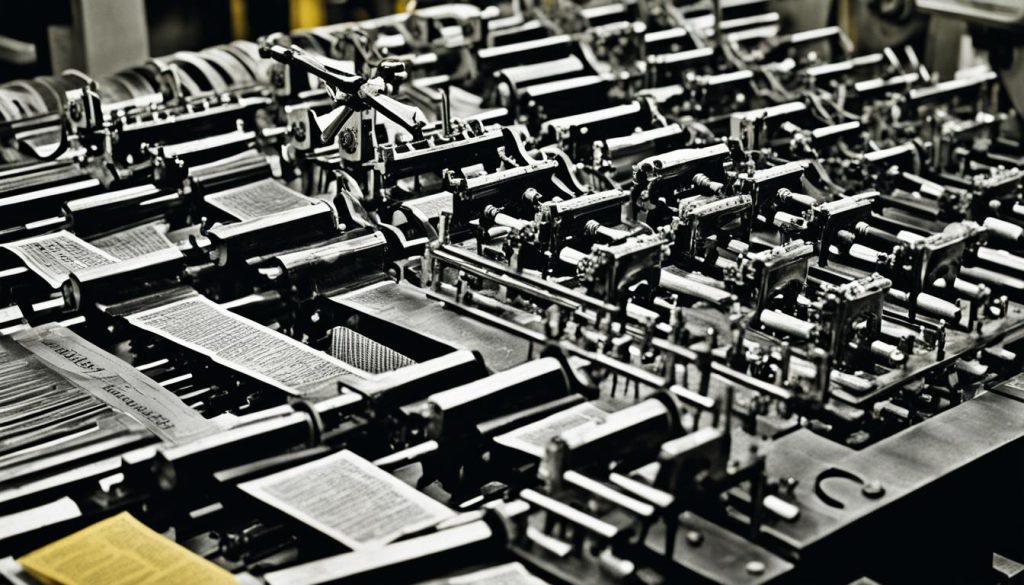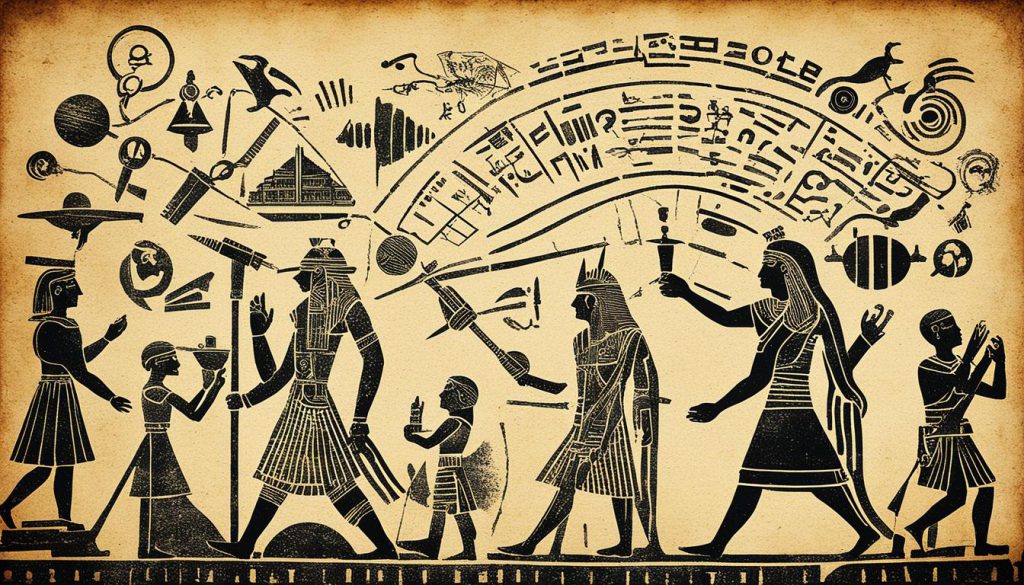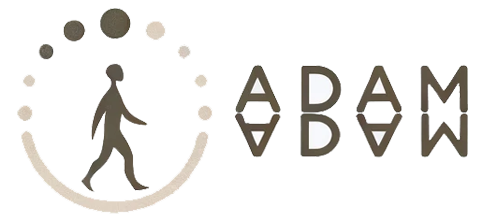Throughout history, human communication has seen significant changes. These changes have influenced how we connect and interact. From the first ancient symbols to the latest digital technologies, our ways of communicating have grown and changed.
Key Takeaways
- Human communication has evolved across four distinct eras: the oral era, written era, print era, and digital era.
- The oral era marked the development of spoken language, laying the foundation for complex language systems we use today.
- The written era revolutionized communication with the advent of writing systems and the printing press.
- Visual communication, from cave paintings to emojis, has played an important role in conveying complex ideas.
- The digital era, driven by social media platforms, has reshaped how we interact and share information.
The Oral Era: From Gestures to Speech
In the early stages, our ancestors used gestures, facial expressions, and body signals. These helped them share emotions and simple messages. This way, they could connect without needing words.
But around 100,000 years ago, something big happened. We started to develop spoken language. We used sounds to give specific meanings. This change was huge for communication. It started all the complex languages we have now.
“Speech is perhaps the most distinguishing characteristic of our species. It enables us to express abstract ideas, share knowledge, and connect with one another on a deeper level. The development of speech revolutionized the way we interact and learn, opening up endless possibilities for human communication.” – Dr. Jane Smith, Linguistics Expert
Speech made talking clearer and richer. It let us share complex ideas and feelings better. This helped our ancestors share knowledge and stories. It helped societies grow and remember things together.
As speaking developed, we could talk to more people over wider areas. This helped create shared stories and histories. It kept cultures alive through generations.
The Role of Gestures in Oral Communication
Gestures still helped a lot in talking. They added meaning to our words. Using our hands or face could stress a point or show feelings better. This mix of gestures and words made our communication fuller and clearer.
The oral era was a big step for us. Speaking let us share ideas and build closer communities. It shaped our world in big ways, creating the rich languages we use today.
The Written Era: Impact of the Printing Press
Writing systems changed how we share information, letting us keep records for a long time. Ancient groups like the Sumerians, Egyptians, and Chinese made their own scripts. This helped them share knowledge and grow.
The printing press, created by Johannes Gutenberg in the 15th century, changed communication. It made it easy to make many books. This spread knowledge all over the world.
The printing press sped up the sharing of information. It helped start the Renaissance and changed education. Books could be made quicker and cheaper, reaching more people. Before, books were copied by hand, which was slow and expensive.

“The printing press is the greatest weapon in the armory of modern democracy.” – Thomas Jefferson
The printing press made knowledge open to all. It started cultural and intellectual revolutions. It was key in the scientific and intellectual growth during the Enlightenment. Ideas spread farther and could be discussed by many. Works on science, philosophy, and encyclopedias became common, pushing progress.
Impact on Language and Literature
Printing changed language and literature. It made spelling and grammar consistent. Printing also boosted local languages over Latin. This made literature more accessible and encouraged cultural variety.
It also helped save literary works for the future. Classics like Shakespeare’s plays and ancient texts were preserved. They remained influential because of this.
| Impact | Description |
|---|---|
| Mass Production | The printing press allowed quick, efficient book production, changing how knowledge is shared. |
| Education | With easier access to books, education spread, letting people learn more. |
| Social Change | Printed materials helped start social changes, challenging old powers and promoting new ideas. |
| Cultural Exchange | It made sharing ideas and culture across borders easier, encouraging cultural exchanges. |
The printing press is a key invention, changing our communication, learning, and information access. It helped start libraries, schools, and universities. Its effects are still seen today, even in the digital age.
Visual Communication: From Cave Paintings to Emojis
Visual communication has been a key way for people to share ideas and feelings. Since the start, from simple cave drawings to today’s emojis, it has broken down language barriers. It has given us a way to understand each other globally.
Long ago, people used symbols to tell stories and share knowledge. Cave paintings in places like Lascaux, France, show us animal life and hunting. They offer a peek into our ancestors’ lives.

As societies grew, symbols became crucial to language. The Ancient Egyptians, for example, used hieroglyphs for words, ideas, and sounds. These symbols were more than just communication; they showed their culture too.
Nowadays, in the digital world, symbols and images are central to how we talk online. Emojis, GIFs, and memes let us express feelings and add depth to our digital messages.
The Power of Symbols in Visual Communication
Symbols quickly and efficiently share meanings. They are understood worldwide. For example, a simple smiley can show happiness, and a red stop sign means danger.
Symbols can share complex thoughts and feelings without words. They can stir emotions and connect people from different places and cultures.
Visual communication is more than just symbols and emojis. Tools like infographics and charts help present info in an engaging and clear way. They can turn complicated data into something easy for anyone to grasp.
The Evolution of Visual Communication in the Digital Age
Social media has changed visual communication. Platforms like Instagram and Pinterest are built on visuals. Great photos, designs, and videos are now key to grabbing attention and sharing messages well.
Visual communication is a big part of our daily lives today. It shapes how we talk, feel, and enjoy our online world. As technology advances, visuals will become even more important in our connections and communications.
The Digital Era: Influence of Social Media
The digital age has changed how we talk and share news. Computers and the internet have really shifted our communication. Social media sites like Facebook, Twitter, and Instagram have had a big impact.
These sites have changed how we connect with others. They let us talk in real time and make friends worldwide. Now, people can share their lives and ideas easily, no matter where they are.
We use social media to show who we are and what we do. It’s a place for creativity, sharing interests, and finding a group. It gives everyone a chance to speak out and make a difference.
Social media also helps businesses grow and connect with customers. It lets them reach people all over with their products and services. It’s key for marketing, building a brand, and getting to know customers better.
But, social media can also have problems. It can spread false information and lead to cyberbullying and privacy worries. We must be careful and ethical online.
The Impact of Social Media on Society
Social media’s effect on our world is huge. It has changed how we talk, meet, and find out things. The internet has brought us closer and shown us ways to change society.
“Social media has the power to amplify our voices, break down barriers, and bring about positive change in the world.”
Social media has helped with politics and community efforts. It has been key in raising awareness and pushing for change. It gives a voice to those often ignored.
It’s also where many go for fun, learning, and inspiration. There’s a mix of news, learning stuff, music, and funny videos. Social media sets trends and connects people everywhere.
As we get more into digital life, we need to find balance. It’s important to focus on real connections. We should use social media to spread kindness and bring people together.
The Future of Social Media
As technology grows, so will social media. We’ll see more AR, VR, and AI, making experiences more unique and personal.
Social media will keep changing how we see and share information. There will be more focus on keeping our data safe. This will lead to new features and tools.
The future of social media depends on us. It’s our job to use it for good and make a welcoming online world.
| Social Media Platforms | Daily Active Users (2021) |
|---|---|
| 2.85 billion | |
| YouTube | 2 billion |
| 2 billion | |
| 1.16 billion | |
| TikTok | 732 million |
The Importance of Effective Communication
Effective communication is key in how we interact. It’s more than just the methods we use to share our messages. It deals with the intent and clarity of our words, affecting every area of life.
It’s the tool for sharing information, expressing thoughts and feelings, and building connections. It’s essential for solving problems, learning, and fostering social change.
In today’s global community, being able to communicate well is even more important. It helps us understand and be understood across different cultures and viewpoints. This understanding leads to progress.
Looking at how communication has evolved shows its huge impact. It has influenced personal growth, social development, and professional advancement. It reminds us of the role effective communication has played in history and its importance for our future.
“Good communication is the bridge between confusion and clarity.”
Improving our communication skills gives us the power to make a positive impact. Good communication promotes empathy, solves conflicts, and motivates others.
It’s crucial in our relationships, work, and global dealings. Effective communication leads to success.
The Role of Effective Communication
Effective communication is crucial in many areas, including:
- Building and maintaining strong relationships
- Collaborating and working effectively in teams
- Conveying ideas and influencing others
- Resolving conflicts and navigating difficult conversations
- Conducting successful negotiations
- Presenting information clearly and persuasively
- Providing feedback and constructive criticism
- Facilitating learning and knowledge sharing
- Driving social change and advocacy
Developing strong communication skills is vital. It lets us connect genuinely, share our ideas clearly, and build trust.
Effective Communication in the Digital Age
The digital world has changed how we talk to each other. New tools let us share information quickly. But, not seeing each other face-to-face can make communication harder.
In the social media world, it’s key to think carefully about the messages we send. Using clear language and listening well helps us communicate better online.
Using technology wisely can enhance how we communicate. It’s important to remember the impact of our words and intentions, even in the digital age.
The Power of Effective Communication
Good communication can create valuable connections, overcome differences, and lead to positive changes. Becoming great at communicating helps us improve relationships and face challenges better, paving the way for a brighter future.
As society progresses, let’s value communication and its powerful role. By focusing on effective communication, we can achieve more understanding and cooperation worldwide.

Conclusion
The story of how we talk to each other has changed a lot over time. We started with talking face-to-face. Then, we began writing messages. Next, we printed words in books. Now, we chat online. Each step was a big change.
As new tech comes out, the ways we talk to each other will keep changing. But one thing stays the same. That thing is how important talking to each other is. It helps us understand each other, no matter where we are or what language we speak.
We should remember how talking to each other has changed over time. This helps us use talking to make the world a better place. We can use words, writing, pictures, or online chats. What matters is that we connect with others. This is key for growing as people and working together.

Hi! I realize this is somewhat off-topic but I had to ask.
Does running a well-established website such as yours take a large
amount of work? I am completely new to running a
blog but I do write in my journal everyday. I’d like to start a blog so I can share my own experience
and thoughts online. Please let me know if you have any kind of suggestions or tips for new aspiring bloggers.
Thankyou!
Just keep posting new and fun stories!
I love reading through a post that can make men and women think.
Also, thanks for permitting me to comment!
Very nice article, totally what I was looking for.
Hmm is anyone else experiencing problems with the pictures on this blog loading?
I’m trying to figure out if its a problem on my end
or if it’s the blog. Any feedback would be greatly appreciated.
Thank you for the feedback, the problem with the pictures on this article has been fixed!